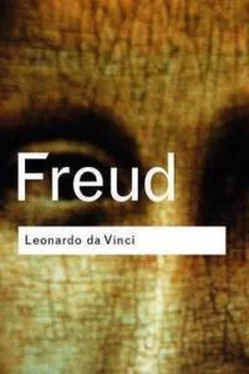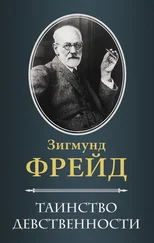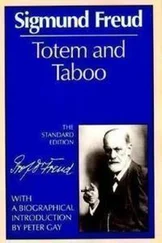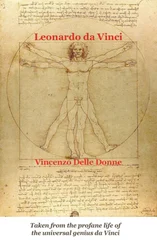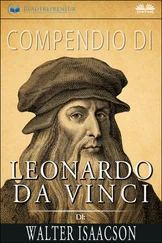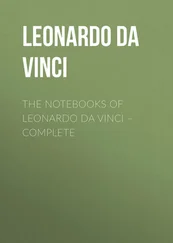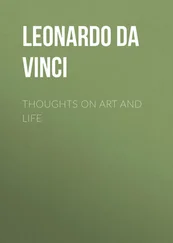The peculiarity of this emotional and sexual life viewed in connection with Leonardo's double nature as an artist and investigator can be grasped only in one way. Of the biographers to whom psychological viewpoints are often very foreign, only one, Edm. Solmi, has to my knowledge approached the solution of the riddle. But a writer, Dimitri Sergewitsch Merejkowski, who selected Leonardo as the hero of a great historical novel has based his delineation on such an understanding of this unusual man, and if not in dry words he gave unmistakable utterance in plastic expression in the manner of a poet. [16] Merejkowski: The Romance of Leonardo da Vinci, translated by Herbert Trench, G. P. Putnam Sons, New York. It forms the second of the historical Trilogy entitled Christ and Anti–Christ, of which the first volume is Julian Apostata, and the third volume is Peter the Great and Alexei.
Solmi judges Leonardo as follows: "But the unrequited desire to understand everything surrounding him, and with cold reflection to discover the deepest secret of everything that is perfect, has condemned Leonardo's works to remain forever unfinished." [17] Solmi l. c. p. 46.
In an essay of the Conferenze Fiorentine the utterances of Leonardo are cited, which show his confession of faith and furnish the key to his character.
" Nessuna cosa si può amare nè odiare, se prima no si ha cognition di quella. " [18] Filippo Botazzi, l. c. p. 193.
That is: One has no right to love or to hate anything if one has not acquired a thorough knowledge of its nature. And the same is repeated by Leonardo in a passage of the Treaties on the Art of Painting where he seems to defend himself against the accusation of irreligiousness:
"But such censurers might better remain silent. For that action is the manner of showing the workmaster so many wonderful things, and this is the way to love so great a discoverer. For, verily great love springs from great knowledge of the beloved object, and if you little know it you will be able to love it only little or not at all." [19] Marie Herzfeld: Leonardo da Vinci, Traktat von der Malerei, Jena, 1909 (Chap. I, 64).
The value of these utterances of Leonardo cannot be found in that they impart to us an important psychological fact, for what they maintain is obviously false, and Leonardo must have known this as well as we do. It is not true that people refrain from loving or hating until they have studied and became familiar with the nature of the object to whom they wish to give these affects, on the contrary they love impulsively and are guided by emotional motives which have nothing to do with cognition and whose affects are weakened, if anything, by thought and reflection. Leonardo only could have implied that the love practiced by people is not of the proper and unobjectionable kind, one should so love as to hold back the affect and to subject it to mental elaboration, and only after it has stood the test of the intellect should free play be given to it. And we thereby understand that he wishes to tell us that this was the case with himself and that it would be worth the effort of everybody else to treat love and hatred as he himself does.
And it seems that in his case it was really so. His affects were controlled and subjected to the investigation impulse, he neither loved nor hated, but questioned himself whence does that arise, which he was to love or hate, and what does it signify, and thus he was at first forced to appear indifferent to good and evil, to beauty and ugliness. During this work of investigation love and hatred threw off their designs and uniformly changed into intellectual interest. As a matter of fact Leonardo was not dispassionate, he did not lack the divine spark which is the mediate or immediate motive power— il primo motore —of all human activity. He only transmuted his passion into inquisitiveness. He then applied himself to study with that persistence, steadiness, and profundity which comes from passion, and on the height of the psychic work, after the cognition was won, he allowed the long checked affect to break loose and to flow off freely like a branch of a stream, after it has accomplished its work. At the height of his cognition when he could examine a big part of the whole he was seized with a feeling of pathos, and in ecstatic words he praised the grandeur of that part of creation which he studied, or—in religious cloak—the greatness of the creator. Solmi has correctly divined this process of transformation in Leonardo. According to the quotation of such a passage, in which Leonardo celebrated the higher impulse of nature ("O mirabile necessita … ") he said: "Tale trasfigurazione della scienza della natura in emozione, quasi direi, religiosa, è uno dei tratti caratteristici de manoscritti vinciani, e si trova cento e cento volte espressa…." [20] "Such transfiguration of science and of nature into emotions, or one might say, religion, is one of the characteristic traits of da Vinci's manuscripts, which one finds expressed hundreds of times." Solmi: La resurrezione, etc, p. 11.
Leonardo was called the Italian Faust on account of his insatiable and indefatigable desire for investigation. But even if we disregard the fact that it is the possible retransformation of the desire for investigation into the joys of life which is presupposed in the Faust tragedy, one might venture to remark that Leonardo's system recalls Spinoza's mode of thinking.
The transformation of psychic motive power into the different forms of activity is perhaps as little convertible without loss, as in the case of physical powers. Leonardo's example teaches how many other things one must follow up in these processes. Not to love before one gains full knowledge of the thing loved presupposes a delay which is harmful. When one finally reaches cognition he neither loves nor hates properly; one remains beyond love and hatred. One has investigated instead of having loved. It is perhaps for this reason that Leonardo's life was so much poorer in love than those of other great men and great artists. The storming passions of the soul–stirring and consuming kind, in which others experience the best part of their lives, seem to have missed him.
There are still other consequences when one follows Leonardo's dictum. Instead of acting and producing one just investigates. He who begins to divine the grandeur of the universe and its needs readily forgets his own insignificant self. When one is struck with admiration and becomes truly humble he easily forgets that he himself is a part of that living force, and that according to the measure of his own personality he has the right to make an effort to change that destined course of the world, the world in which the insignificant is no less wonderful and important than the great.
Solmi thinks that Leonardo's investigations started with his art, [21] La resurrezione, etc., p. 8: "Leonardo placed the study of nature as a precept to painting … later the passion for study became dominating, he no longer wished to acquire science for art, but science for science' sake."
he tried to investigate the attributes and laws of light, of color, of shades and of perspective so as to be sure of becoming a master in the imitation of nature and to be able to show the way to others. It is probable that already at that time he overestimated the value of this knowledge for the artist. Following the guide–rope of the painter's need, he was then driven further and further to investigate the objects of the art of painting, such as animals and plants, and the proportions of the human body, and to follow the path from their exterior to their interior structure and biological functions, which really also express themselves in their appearance and should be depicted in art. And finally he was pulled along by this overwhelming desire until the connection was torn from the demands of his art, so that he discovered the general laws of mechanics and divined the history of the stratification and fossilization of the Arno–valley, until he could enter in his book with capital letters the cognition: Il sole non si move (The sun does not move). His investigations were thus extended over almost all realms of natural science, in every one of which he was a discoverer or at least a prophet or forerunner. [22] For an enumeration of his scientific attainments see Marie Herzfeld's interesting introduction (Jena, 1906) to the essays of the Conference Florentine, 1910, and elsewhere.
However, his curiosity continued to be directed to the outer world, something kept him away from the investigation of the psychic life of men; there was little room for psychology in the "Academia Vinciana," for which he drew very artistic and very complicated emblems.
Читать дальше
